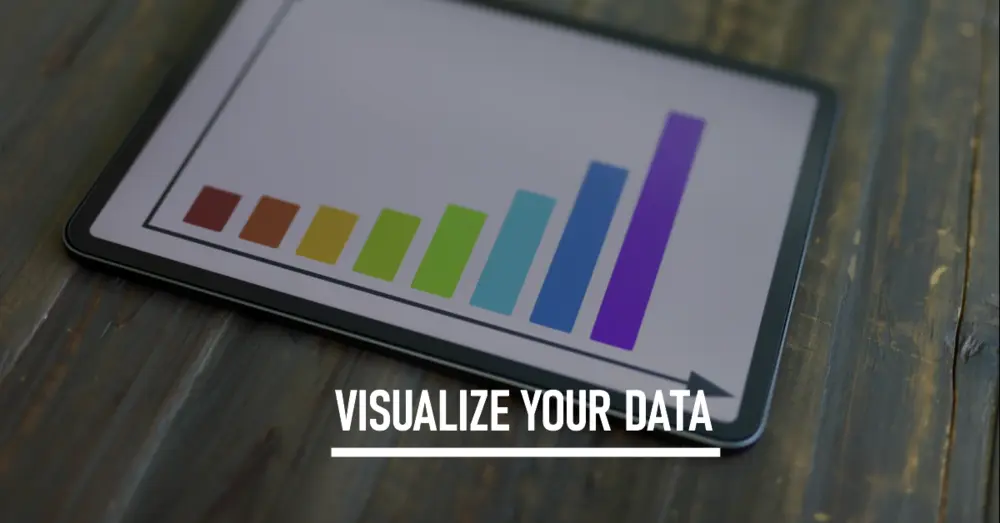Organizations generate a wide range of data for decision-making. Data Visualization helps organizations to understand complex data, observing patterns and trends over a specific period. Data visualizations highlight the trends, patterns, and correlations in data. It is an effective decision-making tool, enabling key individuals to make well-informed decisions backed by data. In addition, Data visualizations combine different datasets from various sources, providing an effective way of using storytelling to communicate data-backed ideas. Data visualizations hold the target audience’s attention as it is easy to understand. It monitors important metrics, keeping an eye on key performance indicators (KPIs).
It is essential to interpret a huge amount of data to follow certain data visualization practices. Furthermore, it helps to curate data in different industries. There are specific guidelines that can result in a better representation and effective communication of data. An experienced data visualization company can help you generate data visualization for your organization, following these guidelines.
To create your own data visualization, at first you need to highlight the most significant insights drawn from the data visualizations. Focus on trends, patterns, and outliers that are crucial for understanding the data. Place the findings within the context of the overall study or the broader field. Explain why these findings are important and how they relate to the initial objectives. If applicable, include a final visual to encapsulate the main findings or comparative analysis to highlight the most crucial points. To implement this strategy, you can opt for a legacy application modernization company.
In this blog, we will discuss the top five best practices of data visualization for your better understanding.
Top 5 Best Practices of Data Visualization
Let’s dive deep into some of the best practices to generate data visualization for your organization.
1. Select Appropriate Visuals
Different data is made in different formats. It is essential to analyze your options carefully and select the one that will best tell your story and address the important questions the data raises, all while supporting your core goal.
Bar charts are the most widely used data visualizations, as they are useful for comparing categories within a single metric. Bullet charts have replaced the need for dashboard gauges, meters, and thermometers, comparing measures to demonstrate progress toward a goal. A data visualization consulting company excels at data visualization and can make your data more interactive.
2. Use Predictable Patterns
Humans are pattern-seekers by nature, thus it can be quite challenging to interpret visualization if the patterns are illogical or arbitrary. Whether your data is presented numerically, alphabetically, or sequentially, make sure it makes sense to visitors to take advantage of these human impulses.
As a basic illustration, align your visualization with the convention of left-to-right reading if you are speaking in a language that follows that direction. Make sure the data linkages are evident and the order of the graphs is constant if you’re using more than one.
3. Use Color and Context Cues
Color requires a careful balance to emphasize the information, enhancing data visualization. A single hue or too many shades of the same color can make the data blend, while employing too many colors would produce a cacophony. Context allows us to quickly and easily understand the material. Shapes of subject can convey an engaging tale.
Additionally, the color association is important. To help the viewer comprehend the information more quickly, use intuitive colors and make sense to them. When dealing with temperatures, use blue for cold and red for heat. Additionally, the color choice has a significant impact. Displaying consistency across values or emphasizing data contrasts are useful.
4. Strategically use Size to Visualize Values
Size indicates the context, and scaled values highlight important details. It can change based on the data values in place of color, conveying effective values.
The multiple points of data visualization blend and make it challenging to distinguish between values. The representation is simpler to navigate when size and value are made relative, and color is added as an additional marker.
5. Carefully Apply the Texts
The type and quantity of language you utilize can enhance your visualization. Make sure that any text you use highlights significant information. Even though our brains are programmed to process patterns and visuals over words, using text when it matters most can have a significant impact.
Wrapping Up
Concluding data visualization effectively involves summarizing key insights, contextualizing the data, and suggesting potential actions or implications. Understanding data visualization practices is crucial in today’s data-centric world. Using the visuals, following best practices, avoiding common pitfalls, you can leverage the power of visualization to effectively communicate insights, support decision-making, and drive impactful outcomes.
Data visualizations are crucial for monitoring metrics and KPIs within your organization. There is a plethora of data visualization solutions available to ensure that your reports are easy to comprehend and effective in identifying patterns or anomalies.




